With no more Australians as of the quarter-finals at the 2013 Australian Badminton Open, it is left to visiting shuttlers both young and old, but particularly young to entertain the Sydney crowds through the weekend.
By Aaron Wong, Badzine Correspondent live in Sydney. Photos: Courtesy of ABO Media (live)
The Southern Cross dims
Day 3 marked the end of the road for all the Aussie contenders. The fresh pairing of Glenn Warfe / Raymond Tam (pictured), looking vital on court, achieved a personal best in international competition when they earned the first game point against the eighth-seeded Indonesians Ricky Karanda Suwardi / Muhammad Ulinnuha.
The control of the rallies was admirable for a pair that are not just brand new but having to practice only locally. Tam’s fine smashing and defence was like a man powered by energy tablets, wide awake and wide-eyed, but it consumed a lot of mental energy. Unfortunately, when the Australians failed to convert the game point opportunity they lost some confidence, going down 20-22, 12-21.
“We really needed to clinch that first set,” remarked Tam with ‘what if’ still on his mind. However, both agreed during the mixed zone interview that it is a happy marriage.
Korean Jang Ye Na, a world top ten ranked player in both mixed and women’s doubles and this year’s German Open winner, offered some sage advice after coming off a quick match against Luke Chong / Talia Saunders (pictured), 21-5, 21-11.
“Australians get incredibly nervous in doubles,” said Jang. “It would be better if they can manage to loosen up somehow. That’s the one thing I can quickly think of that will make a significant difference.”
Taiwanese heroine left
Both aged eighteen but with perhaps twenty centimetres height difference between them, Liu Yuchen and Huang Dongping of China, made the defending champion Chen Hung Ling of Chinese Taipei with his new partner, Wu Ti Jing, work hard but were ultimately able to dismiss them, 19-21, 21-15, 21-16. Wu, in her first year on the international circuit, is no doubt competent but lacks creativity and robust bravado which are the technical and on court personality qualities often associated with the famous mixed doubles ladies like Zhang Yawen, Lilyana Natsir, or Nadia Zieba.
The other Taiwanese, Pai Hsiao Ma, fared better than all her countrymen and has become a crowd favourite in Sydney as the week has progressed. The best way to describe her is like the Asian version of Petya Nedelcheva. She clearly loves and understands how to play singles but you wouldn’t pick her at first glance as a specialist of that discipline.
Malaysia’s Yang Li Lian made Pai huff in frustration at times but the latter, seeded third, never looked troubled throughout and won 17-21, 21-11, 21-10. She thus earned her next opportunity to school a youngster, as her quarter-final opponent would turn out to be 15-year-old Hanoi International runner-up Chochuwong Pornpawee (pictured) of Thailand.
Dog ate my homework
Someone didn’t do homework on his opponent. If he had, he’d have known to expect that his adversary is capable of incredible accuracy on straight smashes and possesses heightened vision and bravery in crouched defence in the forecourt. However, Taufik Hidayat (pictured) seemed surprised at these qualities of Xue Song. To illustrate, during the first game, Xue threaded the needle to deliver two forehand put-away smashes and a clear down and within inches of Hidayat’s own forehand line, which the Indonesian was guarding.
There were intermittent glimpses of Hidayat’s natural super powers. The first time Xue tested the Hidayat backhand drive he was blown completely off balance in a single shot by the exceptional speed of the reply delivered with relaxed ease.
For Taufik, he was not exactly uncommitted as much as playing with the idea of how much he can get away with on minimal movement, and it wasn’t a walk in the park for his opponent. Xue displayed everything he knew and vast court coverage in order to oust the 2004 Athens Olympic gold medallist, 21-15, 21-18. Most interestingly, the young Chinese dominated at the net with his audacity to seize half opportunities to fly forward and fling the shuttle overhead rather than trade net replies with the man most famous for them when both men found themselves in the forecourt.
The tournament magazine states that there are five players from India (Chetan Anand, Arvindh Bhat, Ajay Jayaram, Anand Pawar, and Anup Sridhar [late withdrawal]) who have stretched the world number one Lee Chong Wei to a third game. As of this evening, make that six Indians, when R.M.V. Gurusaidatt (pictured) lost the first 10-21, but subsequently levelled things with a 21-18 in the second. In the final game, Lee, who has been recovering from a cold, injected bursts of pure power and classier strokes to end the match when Gurusaidatt made an unforced error after serving at 15-20.
Men’s Singles: the average level needed
The whole crowd, including the local Chinese, genuinely clapped for Indonesia’s, twelth-seeded, Alamsyah Yunus upon his victory over seventh seed Gao Huan of China, 16-21 21-9 21-13, in the longest match of the day, running 73 minutes. Gao also gave applause to Yunus for his ability to rally seemingly indefinitely and repeatedly given his shortness of stature and hence also short physical wingspan.
All five Chinese men’s singles representatives demonstrated what is the general level needed to win this Grand Prix Gold title. That each of them is of a different physical build means each man plays to different strengths. Guo Kai, the tall left-hander, engaged in a tug of war of points with Nguyen Tien Minh. If Nguyen weren’t as special or as experienced a player as he is, he would have capitulated under the continual savage assault from all heights and angles by Guo’s shuttles. Guo Kai is very enjoyable to watch, with lovely, constantly powerful, sharp, deadly shots, everything critics said Hafiz or Bao Chunlai should have had more disposition towards. He played great but was beaten by a greater player on the day, in the way a straight flush has to yield to a royal flush, with the difference being Nguyen’s unbelievable accuracy on the final clear and rapid-fire stinging smashes, on the strength of which he won 21-19, 22-20.
Tian Houwei, like a pseudo Du Pengyu, worked earnestly and diligently to deny Simon Santoso the chance to generate his usual flair with the shuttle. Furthermore, Santoso, snapping strings through three racquets in the space of a few minutes in the rubber game only aided the cause of the Chinese to reach 16-21, 21-17, 21-14.
Click here for complete Day 3 results
![AUSTRALIAN OPEN 2013 R16 – Locals out, youngsters rise With no more Australians as of the quarter-finals at the 2013 Australian Badminton Open, it is left to visiting shuttlers both young and old, but particularly young to entertain the […]](http://www.badzine.net/wp-content/uploads/Newsflash-thumbnail.png)
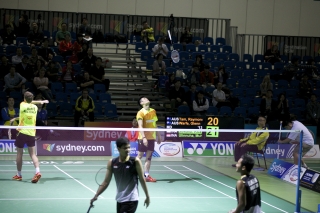
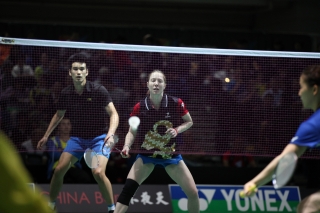
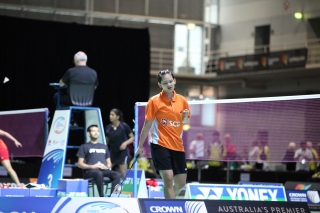
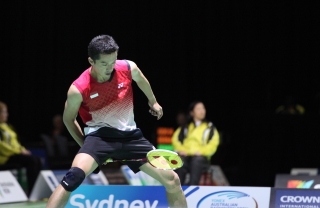
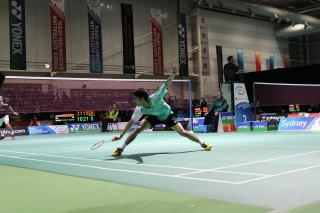

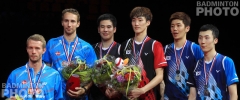
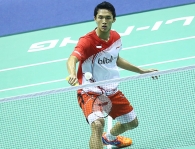
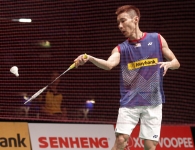

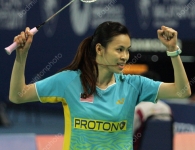

Leave a Reply